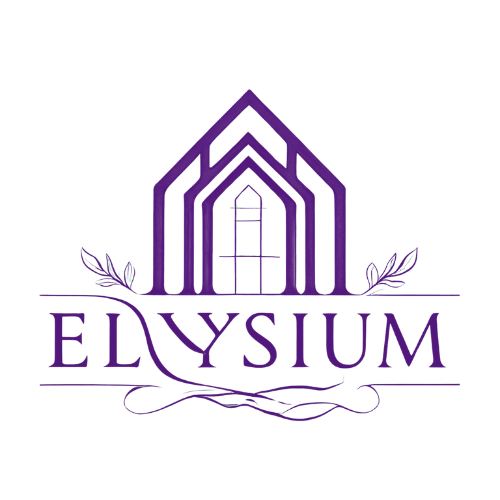5 Proven Strategies to Maximize ROI on Infill Construction Projects
From land acquisition to exit planning, here’s how experienced developers are increasing margins on small-lot builds.
As cities grow more crowded and land availability diminishes, infill construction has become a critical solution for developers seeking to meet housing demand and generate attractive returns. These small-lot, strategically located projects—often tucked into the gaps of existing neighborhoods—offer a compelling mix of efficiency, value, and long-term upside. But maximizing ROI on infill developments requires more than just identifying a vacant parcel. It demands a disciplined, end-to-end strategy that spans acquisition, design, financing, and exit.
At Estates of Elysium, we’ve seen how the most successful developers approach infill construction with precision and foresight. Here’s how they’re doing it in today’s evolving market.
1. Targeting the Right Lots in Emerging Micro-Markets
Not all infill sites are created equal. Developers who consistently outperform are those who understand how to identify undervalued lots in high-potential areas—often referred to as “transitional neighborhoods.” These are markets where infrastructure, migration patterns, and local government initiatives are converging to drive long-term appreciation.
According to a recent Forbes report on real estate trends, the strongest investment opportunities lie in markets that blend urban accessibility with affordability, particularly near transit corridors and walkable amenities. Developers who move early in these zones are able to lock in land at favorable prices before competition and pricing accelerate.
Adding to this, Kiavi’s insights on maximizing ROI in profitable infill construction emphasize that infill lots located within established neighborhoods tend to have intrinsic value due to existing utilities and amenities, reducing infrastructure costs and accelerating time-to-market. This can significantly enhance ROI by avoiding the costly and time-consuming extensions typical of greenfield developments.
2. Designing for Efficiency, Density—and Market Demand
Infill construction often means working within tight footprints and strict zoning. But constraint breeds creativity. By designing higher-density housing that doesn't sacrifice quality, developers can significantly boost returns per square foot. The key is understanding local buyer and renter expectations—and aligning floorplans, finishes, and features with those demands.
As highlighted by BuilderOnline’s recent analysis, today’s most profitable small-lot builds use thoughtful design to integrate more units while maintaining visual harmony with the surrounding community. Features like private outdoor space, EV-ready garages, and high-efficiency systems not only meet modern standards but can also justify premium pricing.
Rockford Construction’s take on infill real estate ROI underscores the importance of incorporating sustainable design and energy-efficient systems in infill projects, which not only reduce long-term operating costs but also appeal to environmentally conscious buyers, commanding higher sales prices or rents. Additionally, they note that smart space planning—such as incorporating flexible room layouts—can attract a broader tenant base, improving occupancy rates and overall returns.
3. Accelerating Entitlements Through Stakeholder Engagement
One of the biggest variables in infill development is the local entitlement process. Rezoning, variances, or navigating historic district regulations can stall a project—or derail it entirely. Successful developers know that building early relationships with city planners and community stakeholders can dramatically reduce approval timelines and build goodwill.
An article from The Real Deal recently noted the rising pushback against density in urban cores, emphasizing the importance of transparency and community outreach. By incorporating feedback, hosting informational sessions, and aligning with broader municipal goals, developers can turn potential opposition into support—and keep projects moving forward.
Kiavi highlights how early engagement can reduce costly redesigns caused by last-minute objections or regulatory changes. Moreover, documenting community benefits—like affordable housing units or green space—can position the project as a local asset, smoothing regulatory paths.
4. Controlling Construction Costs Without Cutting Corners
With continued volatility in labor and material costs, controlling construction spend is more critical than ever. Infill developers are finding success by standardizing specifications, working with repeat vendor partners, and exploring modular or panelized construction techniques to shorten build cycles and reduce waste.
Lean construction principles and digital project management tools are also making it easier to track costs and adjust quickly. Developers that focus on operational efficiency from day one are better equipped to hit budget targets and accelerate time-to-market—two factors that have a direct impact on ROI.
According to BizforceNow on maximizing ROI in renovation vs new construction, infill projects benefit from renovation techniques combined with new construction efficiencies, especially when developers reuse existing foundations or infrastructure. This hybrid approach can significantly reduce material costs and construction timelines, further boosting profitability. Moreover, advanced technologies like Building Information Modeling (BIM) allow teams to foresee clashes and errors before breaking ground, minimizing expensive delays.
5. Structuring Capital for Flexibility and Profit
Even the best-designed infill project can underperform without the right financial strategy. Developers are increasingly using creative capital stacks—including preferred equity, mezzanine debt, and bridge financing—to reduce upfront equity requirements and enhance internal rate of return.
With tightening credit markets, working with the right financial partners has become a key advantage. Estates of Elysium connects residential and commercial investors with tailored funding and private equity solutions, helping developers structure capital for maximum flexibility. Whether your project is build-to-sell, hold-and-rent, or part of a larger portfolio strategy, aligning capital with project goals is essential for long-term success.
Kiavi also points out how leveraging short-term construction loans combined with long-term permanent financing allows developers to optimize cash flow throughout the project lifecycle. This layered capital approach can increase purchasing power and reduce carrying costs, directly impacting margins.
Final Thoughts
Infill development presents one of the most dynamic and rewarding opportunities in real estate today—but only for those who approach it strategically. From identifying the right lots to executing efficient builds and optimizing financial structure, every stage of the process offers a chance to enhance returns and reduce risk.
At Estates of Elysium, we specialize in helping developers and investors capitalize on these opportunities by connecting them with the funding, equity partnerships, and financial insight they need to succeed. If you’re planning your next infill project, let’s talk about how we can help you unlock its full potential.

